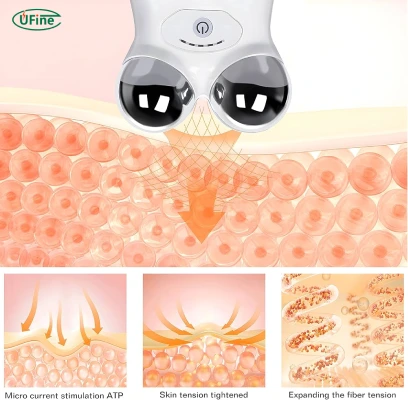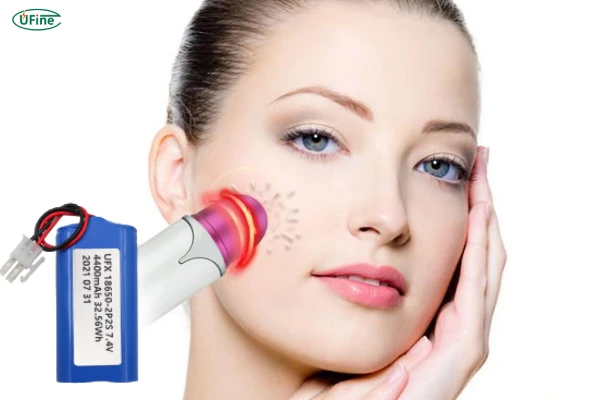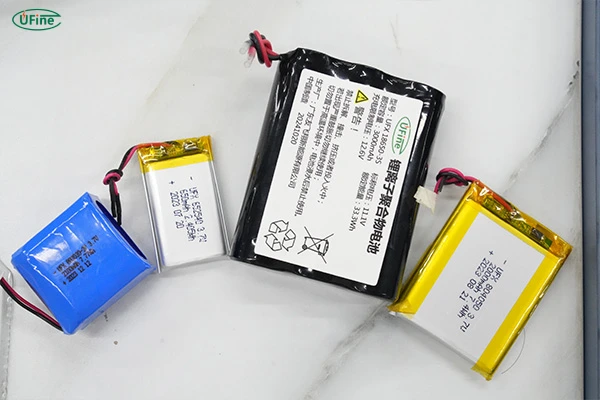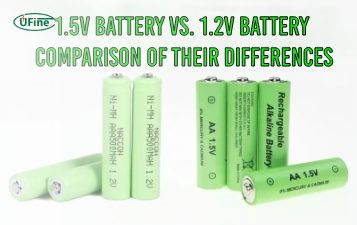
- Part 1. Learn microcurrent facial device
- Part 2. Why the battery matters more than you think
- Part 3. Common types of batteries used in microcurrent facial devices
- Part 4. Rechargeable vs. replaceable: Which is better?
- Part 5. 7 Critical parameters for choosing a best battery
- Part 6. How long do these batteries last?
- Part 7. How to extend battery life?
- Part 8. Where to find reliable battery suppliers?
- Part 9. Final thoughts
- Part 10. FAQs
In the beauty tech world, microcurrent facial devices have become a skincare favorite. They promise firmer, brighter, and more youthful-looking skin—without needles or downtime. But here’s what most people don’t realize:
The performance of these devices hinges almost entirely on one key component—the battery.
It might sound technical or boring at first, but understanding the microcurrent facial device battery can save you from frustrating malfunctions, wasted money, or worse—damaged skin from an underpowered or unreliable device.
Let’s walk through everything you need to know, step by step.
Part 1. Learn microcurrent facial device
Microcurrent facial devices are popular skincare tools. They use low-level electrical currents to tone muscles and boost collagen.
How do they work?
- Emit gentle pulses (like your body’s natural currents).
- Stimulate facial muscles for a lifted look.
- Help skincare products absorb better.

Key parts of the device:
✔ Probes – Deliver currents to your skin.
✔ Control panel – Adjusts intensity.
✔ Battery – Powers everything.
Without a good battery, your device won’t work well. Let’s dive deeper!
Part 2. Why the battery matters more than you think
Many users blame poor results on the device design or technique. But often, it’s the microcurrent facial device battery quietly underperforming behind the scenes.

Here’s why you should care deeply about the battery:
- Power consistency: A weak battery leads to unstable current, reducing effectiveness.
- Safety: Inferior batteries can overheat, leak, or short-circuit. Not something you want near your face.
- Longevity: Good batteries support hundreds of cycles. Cheap ones don’t last.
In short, your beauty routine is only as good as the power behind it. And that power? Comes from a battery you probably haven’t thought much about—until now.
Part 3. Common types of batteries used in microcurrent facial devices

Microcurrent facial devices use different battery types depending on design, cost, and power needs. Here’s a breakdown:
1. Lithium-ion (Li-ion) Batteries
- Most commonly used in premium devices.
- Rechargeable, lightweight, and high capacity.
- Long lifespan (300–1000 cycles).
2. Lithium Polymer (LiPo) Batteries
- A type of lithium battery, even lighter and more flexible.
- Ideal for slim or compact beauty devices.
- Rechargeable and safe with proper manufacturing.
Ufine Battery specializes in custom lithium polymer batteries that are perfect for microcurrent beauty devices. We provide ultra-thin, flexible, high-rate batteries that can be tailored for any design.
Get in touch and request a quote tailored to your project needs.
3. NiMH (Nickel-Metal Hydride) Batteries
- Older technology.
- Rechargeable, but bulkier and less efficient.
- Not ideal for sleek, modern devices.
4. Alkaline Batteries
- Non-rechargeable, used in cheaper or older models.
- Need frequent replacement.
- Not eco-friendly.
Part 4. Rechargeable vs. replaceable: Which is better?
This is a question we get a lot—and it depends on your priorities. Let’s break it down:
This is a question we get a lot—and it depends on your priorities. Let’s break it down:
| Feature | Rechargeable | Replaceable |
|---|---|---|
| Convenience | Easy USB charging | Frequent replacements |
| Cost over time | More economical | Costs add up |
| Power output | Consistent | Tends to fade |
| Sustainability | Eco-friendly | Wasteful |
| Design compatibility | Sleek, compact | Bulky |
Conclusion: If you want consistent performance and minimal hassle, go rechargeable. Most high-end microcurrent facial tools are built this way.
And if you’re a brand creating your own device? Partnering with a custom battery manufacturer like Ufine Battery gives you full control over shape, size, and power.
Part 5. 7 Critical parameters for choosing a best battery
Choosing the right microcurrent facial device battery isn’t just about voltage and capacity. Here are the seven key metrics to focus on:
- Capacity (mAh) – Determines how long the device runs on a single charge.
- Voltage (V) – Must match your circuit design.
- Discharge Rate (C-rate) – Affects how fast power is delivered.
- Cycle Life – Higher cycles mean longer battery life.
- Operating Temperature – Critical for devices used in warm bathroom settings.
- Size & Form Factor – Especially important for slim, portable devices.
- Internal Resistance – Lower is better for energy efficiency and safety.
Part 6. How long do these batteries last?
On average, a good-quality lithium-ion or lithium polymer battery lasts 2 to 4 years, depending on how often you use and charge the device.
However, lower-end devices or batteries may start to degrade within a year.
Warning signs of battery aging:
- Device runs out of power quickly
- Weak current pulses
- Charging takes too long or fails entirely
If your results seem to decline over time, don’t assume the device is broken. It might just need a battery replacement.
Part 7. How to extend battery life?
Here are practical tips to make your microcurrent facial device battery last longer:
- Avoid overcharging – Unplug once fully charged.
- Don’t let it die completely – Charge before it hits 0%.
- Use the original charger – Knock-off chargers can damage the battery.
- Store at room temperature – Keep away from heat and humidity.
- Clean charging ports – Dust and debris can block proper connections.
- Use it regularly – Idle batteries degrade faster than active ones.
- Don’t store fully charged or empty for long – Store at 40–60% if unused.
Treat your battery well, and it will reward you with consistent performance for years.
Part 8. Where to find reliable battery suppliers?
Not all batteries are created equal. If you’re a brand, OEM, or even a tech-savvy end user, working with a trusted supplier is critical.
Here’s what to look for in a battery supplier:
- Clear customization options
- Strong safety certifications (UL, CE, RoHS)
- Transparent specifications
- Responsive customer service
- Long-term partnership potential
Ufine Battery is a leading Chinese manufacturer of custom lithium batteries. We produce a wide range, including:
- Lithium polymer batteries
- LiFePO4 batteries
- 18650 and other cylindrical cells
- Ultra-thin, high-temperature, and high-rate batteries
Whether you need small batteries for handheld devices or high-capacity cells for professional-grade tools, Ufine Battery can customize a solution that fits.
Part 9. Final thoughts
Your microcurrent facial device does amazing work—but only if its battery can keep up.
Think of the microcurrent facial device battery as the engine of your skincare tool. Don’t settle for weak or generic power sources. Whether you’re a consumer replacing a battery or a business developing your own product, quality matters deeply.
For long-term performance and complete peace of mind, choose a battery partner you can trust.
Contact Ufine Battery today for custom lithium battery solutions designed to elevate your beauty tech.
Part 10. FAQs
Can I replace the battery myself?
In most cases, no—especially if it’s sealed inside. It’s best to contact the manufacturer or a professional technician.
Is it safe to use a third-party battery?
Only if it meets the same specs and safety standards. Otherwise, it can damage your device or pose safety risks.
What’s the best battery type for a portable beauty device?
Lithium polymer (LiPo) batteries are ideal—lightweight, flexible, and powerful. Ufine Battery specializes in these.
How often should I charge the device?
After every use or when it drops below 20%. Avoid letting it completely discharge.
My device heats up while charging. Is that normal?
A little warmth is okay. Excessive heat? Not normal. Could be a faulty battery—time to replace it.
Related Tags:
More Articles

1.5V Battery Vs. 1.2V Battery: Comparison of Their Differences
Compare 1.2V vs 1.5V batteries: voltage, usage, rechargeability. Best for remotes, toys, cameras. Discover which AA battery suits your device.
Recommended 10 Best Batteries For Smoke Detectors
Discover the best batteries for smoke detectors in 2025. Compare top 10 9V and AA options for long-lasting, leak-proof, and reliable smoke alarm power.
Triple A Battery Voltage: Everything You Need to Know
Learn how many volts are in a triple A battery (1.5V vs 1.2V), see AAA battery voltage chart, and compare chemistry, testing, and lifespan for 2025 devices.
9V vs AA Batteries for Fire Alarm: Which One Should You Use?
Compare 9V and AA batteries for smoke detectors. Learn which type provides better lifespan, voltage, and cost efficiency to keep your fire alarms reliable.
Flashlight Battery Size: Types, Choosing Tips and FAQs
Explore flashlight battery sizes with an easy chart. Learn what batteries small flashlights use and how to pick 18650, 26650, 14500, or CR123A cells.


